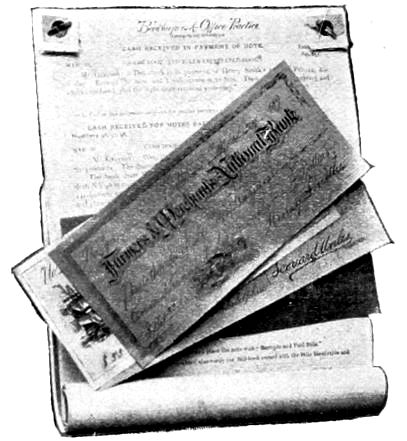
Title: The Ohio Naturalist, Vol. II, No. 1, November, 1901
Author: Various
Release Date: August 28, 2023 [eBook #71507]
Language: English
Credits: Richard Tonsing and the Online Distributed Proofreading Team at https://www.pgdp.net (This file was produced from images generously made available by The Internet Archive)
Transcriber’s Note:
New original cover art included with this eBook is granted to the public domain.
| Volume II. | NOVEMBER, 1901. | Annual Subscription, 50 cts. |
| Number 1. | Single Number, 10 cts. |
Ohio Business Institute....

Bookkeeping taught here as books are kept. All entries made from vouchers, bills, notes checks, drafts, etc. The student learns by doing. Thorough, interesting and practical.
We are pioneer teachers of Gregg’s Light-Line Shorthand, a simple, sensible, legible, rapid system. Learned in half the time required by other systems. Send postal for first lesson.
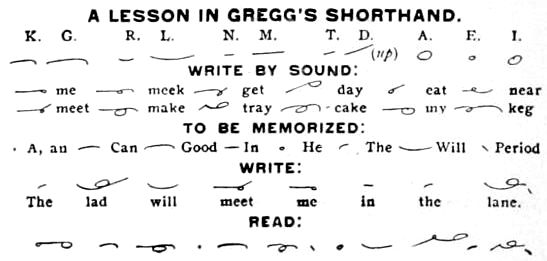
If you are at present employed, write us regarding our Home Study work.
Same thorough instruction as given in the class-room.
Circulars and Booklets free to those desiring particulars concerning an up-to-date School of Business.
Students graded on their daily recitations and term examinations. Large class rooms designed for the recitation system. Laboratories are large, well lighted and equipped with modern apparatus. Abundant clinical facilities in both Medical and Dental Departments. CONSIDERING SUPERIOR ADVANTAGES FEES ARE LOW.
MEDICAL AND SURGICAL CLINICS AT FOUR WELL EQUIPPED HOSPITALS. ❧ ❧ ❧ ❧
A journal devoted more especially to the natural history of Ohio. The official organ of The Biological Club of the Ohio State University. Published monthly during the academic year, from November to June (8 numbers). Price 50 cents per year, payable in advance. To foreign countries, 75 cents. Single copies, 10 cents.
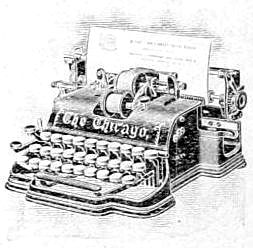
No typewriter is worth $100. We have made a mechanically excelling machine, and sell it for $35. We claim that it is the superior of any typewriter made. This is a broad but carefully weighed statement, and it is the truth.
Awarded gold medal at the Paris Exposition, 1900, in open competition with all other makes of typewriters.
Our descriptive matter tells an interesting story. Send for it and learn something about a high-grade typewriter sold at an honest price.
| Volume II. | NOVEMBER, 1901. | No. 1. |
| PAGE. | |
|---|---|
| Announcements | 131 |
| Geophilous Plants of Ohio—Frederick J. Tyler | 132 |
| Notes on Nesting of Warblers at Ft. Ancient, O.—Ray Densmore | 134 |
| Ohio Fungi Exsiccati.—W. A. Kellerman | 135 |
| Helps in Entomological Study | 140 |
| An Abnormal Salamander.—E. B. Williamson | 141 |
| The Summer’s Work at Sandusky | 141 |
| The Maximum Height of Plants.—John H. Schaffner | 142 |
| The Birds of Cedar Point, Sandusky.—R. L. Baird | 143 |
| Meeting of the Biological Club | 145 |
With this issue the Ohio Naturalist begins its second volume. With brighter prospects before us we shall endeavor to make improvements over the first volume and to give our subscribers as good a publication as we possibly can. The subscription price remains the same as last year and we send out a large number of sample copies of this issue, with the desire that when you receive your copy, if you are not already a subscriber, you will conclude to become one and send us fifty cents and order the current volume sent to your address. A number of complete sets of Volume I., or any single number of that volume, are for sale at the regular subscription price. Address the Ohio Naturalist, Ohio State University, Columbus, Ohio.
It is suggested that we introduce a correspondence department into our journal. To that end we announce that hereafter we shall be pleased to publish letters, or parts of letters, from our correspondents, whenever we consider such of sufficient general interest to our subscribers. Also, whenever desired, questions of importance sent in by correspondents will be answered in these columns. Members of the Advisory Board have promised to take charge of this department of the work.
The underground parts of plants are often of value as a means of characterization, and if the plant is a weed they become of the greatest importance; as the worst weeds are almost invariably geophytes. Very little information is given in most of the manuals upon this subject, and what is given is not always satisfactory.

Figure 1.
The terms used in describing geophytes are in every day use, except one—the crown. This term is applied to an herbaceous perennial which has but one upright stalk the first year. This dies to the surface of the ground at the end of the season, but the short, upright, underground stem survives. It then sends up lateral branches, which in some cases grow out several feet, in others only an inch or so before coming to the surface. This branching, however, usually takes place in the Autumn and often the entire crown of lateral branches is formed some time before the parent plant is cut down by frost.
The following notes, and others, to be given later, are intended to supplement the notes on Geophilous Plants of Ohio in the O. S. U. Naturalist, 1:21:
Hypericum ascyron L. A large woody root, surmounted by a close crown.
133Gentiana andrewsii Griseb. An oblique rhizome, about 2 in. long, with numerous fleshy roots showing root contraction.
Corallorhiza odontorhiza (Willd.) Nutt. A small bulb, sending out the coralloid roots from the base.
Lespedeza frutescens (L.) Britton. A long woody tap root, surmounted by a close crown.
Lespedeza procumbens Michx. A close crownformer.
Lespedeza violacea (L.) Pars. A long tap-root and close crown, sending up from 10 to 20 annual shoots.
Lespedeza hirta (L.) Ell. A crownformer.
Meibomia pauciflora (Nutt.) Kuntze. A rhizomatous crownformer. The rhizomes are slender, a foot or more in length, and branching. At the point of emergence there is usually a cluster of annual stems.
Thalictrum purpurascens L. A crownformer.
Coreopsis tripteria L. Rhizome composed of annual segments which are about 1 inch in length.
Epigaea repens L. Rhizomes long and slender, close to the surface of the ground.
Cypripedium acaule Ait. Rhizome 2 or 3 in. long, sending out numerous strong roots. The annual growth in length is very small. In one specimen examined the growth of four years amounted to only 6 lines.
Waldsteinia fragarioides (Michx.) Tratt. Rhizome 4 to 12 in. long, slender. Lateral branches numerous.
Plantago cordata Lam. An oblique rhizome of unique habit. The rhizomes of large plants are ½ to ¾ in. thick, and are solid for 2 or 3 in., but back of this the center rots away, leaving a shell which splits up to the base. In small plants it splits but once, forming a flat or slightly incurved ribbon. This becomes rounded, and seems to perform the function of a root. It, however, dies off gradually at the posterior parts. In fig. 1 the split portion is still united near the middle of one of the specimens, and a portion of the posterior end is dead. The root-like portion of the rhizome is much longer than the true rhizome.
Plantago rugellii Dec. A short, upright rhizome.
Plantago major L. A short, upright rhizome.
Lobelia syphilitica L. A close crownformer.
Geum canadense Jacq. A short, horizontal rhizome.
A specimen of the large Noctuid moth, Erebus odora Linn., was taken by members of the class in geology who were out for a field excursion on October 5th. So far as I am aware this is the first record for the capture of this species in Central Ohio. The specimen was said to be in excellent condition when taken, but was slightly rubbed and torn in bringing it in.
During the latter part of May of the present year Mr. Tyler and myself spent some time collecting in and around Fort Ancient, Warren County, Ohio. The Fort is situated on the summit of a hill surrounded by gullies 200 to 300 feet deep, with rather steep sides. The Little Miami River runs by on the west.
The sides of the gullies are springy and covered by enough bushes and small trees to make it an ideal resort for many of the warblers. The most common was the yellow-breasted chat. Nearly every clump of bushes was inhabited by one or more pairs of these well named birds. Several nests were found and two sets of four eggs each were taken. One set is heavily marked with reddish blotches; the other is typical in coloration, but one egg is nearly a runt. Oven birds were numerous, but no nests were found. Kentucky warblers were abundant in the lower part of the gullies. Three nests were found, one containing four eggs in an advanced stage of incubation, one containing three fresh eggs and a cow bird’s egg and one nest just completed. There was but little variation in the material used in construction, appearance or location of the nests. The foundations were composed of tightly packed leaves, the bases of which were outward, and a lining of fine rootlets or in one a small amount of horse hair.
A nest of the worm-eating warbler, containing six eggs, was found by Mr. Tyler in a depression in the side of a bank under a bush. The bird sat very close and allowed us to approach within three or four feet before she would leave the nest. We were able to identify her very certainly. The species must have been rare in the locality, for no other specimens were seen during our trip. The nest was composed of a foundation of leaves, loosely placed, and lined with fine rootlets and weed stems.
The Louisiana water thrush was abundant along the streams. One nest was found containing four young birds about a week old. It had a foundation of weed stems and twigs and was lined with rootlets. Its situation was in the side of a bank a few feet above the water.
A Maryland yellow throat was heard on the flats of the Little Miami River, and two other warblers were seen that I was unable to identify, although one may have been the chestnut-sided.
It is proposed to distribute exsiccata of the Ohio species of Fungi, issuing small fascicles from time to time as material may be available.
The original descriptions of all the species, or that given in connection with the first use of the binomial or technical designation, will be printed on the labels in addition to the data usually given. Complete synonomy will not be attempted.
The number of copies will be limited, but it is hoped that all mycologists who might be especially interested in the specimens, and those wishing to exchange, may be furnished with the fascicles as they appear.
Fascicle 1, containing Nos. 1 to 16, issued November 20, 1901, represents the following species:
Thanks are extended to the mycologists who have rendered advice and assistance, especially to Messrs J. B. Ellis, J. C. Arthur, A. P. Morgan, and C. G. Lloyd. Acknowledgment for assistance in collecting will be found on the labels accompanying the several specimens.
The labels to the sixteen specimens of the first Fascicle are here reproduced.
“Aecidium impatientis Sz. V. effusum magnum expallescens, peridiis in centro sparsis, crenatis, sporidiis majoribus luteo-fuscis simplicibus.
“Frequens Maio in foliis Impatientis maculatae. Folia bullata reddit, et macula lata lutescente, in centro obscuriore inquinat.” L. de Schweinitz, Synopsis Fungorum Carolinae Superioris (excerpta), p. 41. No. 442. (1822).
“Aecidium porosum, Pk. Spots none; cups crowded, deep-seated, broad, wide-mouthed, occupying the whole lower surface of the leaf to which they give a porous appearance; spores orange-colored, subangular, .0008–.001 inch in length.” Botanical Gazette, 3:34. April, 1878.
“Aecidium sambuci Sz. V. maculaeforme magnum crassum folia contorquens aurantium exalbicans, peridiis minutis, sporidiisque simplicibus pallidis.
“In foliis inprimis ad venas majores et in petiolis Sambuci Canadensis. Folia contorquet. Color aurantio-croceus; peridia sparsa pulvere pallido, lutescente-albo.” L. de Schweinitz. Synopsis Fungorum Carolinae Superioris (excerpta), p. 41. No. 441. (1822).
“Diagnosis ulterior sequens [sub nom. Caeoma, subgen. Aecidium, sambuciatum]. C. maculis intumescentibus saepe maximis (i. e. 2 uncialibus) in petiolis, pallescentibus. Pseudoperidiis magnis, crebris elevatis, aurantiacis aut pallidis, margine fusco. Sporidiis aurantiofulvis, decolorantibus. In foliis omnia multo minora—pseudoperidiis densim aggregatis.” L. de Schweinitz, Synopsis Fungorum in America Boreali media degentium, p. 294. No. 2897. (1834).
“Sporisorium sorghi. Sp. acervis ovalibus, sporidiis globosis nigris germinum.
“Diagn. Substantia farinosa germinum Sorghi vulgaris primum rimis variis separatur ita ut semina hient. Tum sporidia oriuntur, usque dum tota compages interior germinis in sporidia dilapsa sit. Excrescunt quoque glumae in apicibus ramulorum paniculae, sporidia et partes floris mutilas continentes. Sub microscopio composito acervi compacti conspiciuntur, aqua adfusa non diffluentes, e quibus flocci simplices aut semel ramosi exeunt tenues septati, pauci tantum e singulo acervo. Sporidia compressis acervis in conspectum prodeunt exacte globosa sat magna, minora majoribus intermixta.” H. F. Link in Linné Species Plantarum, 62:86.
Obtained by inoculating the Broom Corn seed with the Sorghum smut.
“P. arthuri n. sp. Conidiophores rather short and rigid, several times dichotomous. Tips rather short and rigid. Conidia broadly ellipsoidal, obtuse, 22–26 mmm. by 19 mmm., slightly violet-colored. Oospores large, dark brown, 34–42 mmm. in diameter, exospore covered with short, blunt papillae.” W. G. Farlow, Botanical Gazette, 8:315. October, 1883.
“Phyllosticta asiminae E. & K. Spots pale brownish, of irregular shape (½–1 cm.), bordered by a distinct, dark raised line; perithecia subglobose, deeply immersed, their apices barely visible on the upper surface of the leaf, scattered, 100–120 mmm. diam.; spores yellowish with a slightly greenish tinge, obovate, 7–9 x 5–6 mmm.” The American Naturalist, 17:1165. November, 1883.
“Puccinia helianthi Sz. P. minor orbicularis aggregata nigra, sporidiis globoso-ovalibus bilocularibus longissime pedicellatis.
“In plurimus Helianthis vulgaris. Sporidia fusco-lutea, pedicello albo, pellucido.” L. de Schweinitz, Synopsis Fungorum Carolinae Superioris (excerpta), p. 47. No. 495. (1822).
“C. A. Claytoniatum, L. v. S. C. fere simplex et sine macula, occupans tota folia. Pseudoperidiis latis sparsis. Sporidiis aurantiacis.” L. de Schweinitz, Synopsis Fungorum in America Boreali media degentium, p. 294. No. 2892. (1834).
“Aecidium podophylli Sz. A. maximum orbiculare demum effusum flavo-aureum crassissimum, sporidiis subelevatis bilocularibus.
“Folia et caules Podophylli saepe ingenti clade late longeque tegit, colore pulchro oculos alliciens.” L. de Schweinitz, Synopsis Fungorum Carolinae Superioris (excerpta), p. 40. No. 435. (1822).
“Puccinia smilacis Sz. P. major confluens difformis et stellata nigro-fusca.
“In Smilace rotundifolia omnia folia subexsiccata occupat.” L. de Schweinitz, Synopsis Fungorum Carolinae Superioris (excerpta), p. 46. No. 494. (1822).
“Septoria podophyllina. Spots large, indefinite, reddish-brown; perithecia epiphyllous, few, clustered on or near the center of the spot, pallid or blackish, slightly prominent, collapsing when dry; spores filiform, variable in length, straight or slightly curved, .0008–.0015 of an inch long.” Chas. H. Peck. Botanical Gazette, 4:170. June, 1879.
For full account of the synonomy with citations and notes, see J. C. Arthur, Botanical Gazette, 23:46, from which the following is taken:
To the translation by Johann Beckmann of Tillet’s account of the species contained in the Royal Academy of Paris, 1776, where it is stated that, “Son dernier effet consiste à convertir cette excroissance en une poussière noirâtre et assez semblable à celle qui sort du lycoperdon ou vesse de loupe.”—a foot note is added by the translator proposing the binomial designation, as follows:
“Meiner Meynung nach, ist das hier beschriebene Gewaechs allerdings ein Staubschwamm (Lycoperdon) und zwar eine Species parasitica, deren in Lin. Syst. Nat. schon drey befindlich sind, unter welchen also dieser Art, etwa unter dem Namen Lycoper. zeae ein Platz anzuweisen waere.” J. B., Hannoverisches Magazin, 6:1330.
Persons who are anxious to learn something of the habits of insects are often at a loss to select reliable books. Some recent additions to the list formerly available will make this task less difficult. The “Insect Book,” by Dr. L. O. Howard, published by Doubleday, Page & Company, covers the groups of insects, exclusive of the butterflies, moths and beetles. It gives figures of a large number of species, some of them in natural colors, and while some of the figures fail to give all the detail necessary for the exact identification of species, most of them are very satisfactory. The keys, descriptions, typical life histories and directions for making collections, are written especially for the class of students who do not have access to specific collections, libraries or instruction.
Another book of great interest at the present time (also by Dr. Howard) is entitled “Mosquitoes, How they Carry Disease, How they Live, How they are Classified, How they May be Destroyed.” This deals in a remarkably clear and attractive manner with the habits of mosquitoes, their breeding grounds, the different species and their distribution, their relation to malaria and yellow fever, and the measures by which their numbers may be reduced. It furnishes incidentally a most excellent guide to the methods of life history study for aquatic insects. It is published by McClure, Phillips & Co.—H. O.
Mr. John Russi during the past summer collected a newt, Diemyctelus viridescens, Raf., near Salem, Ohio, with a fifth foot growing from the dorsal surface of the left thigh, as shown in figure 1. The newt is a young one, 48 millimeters in length.
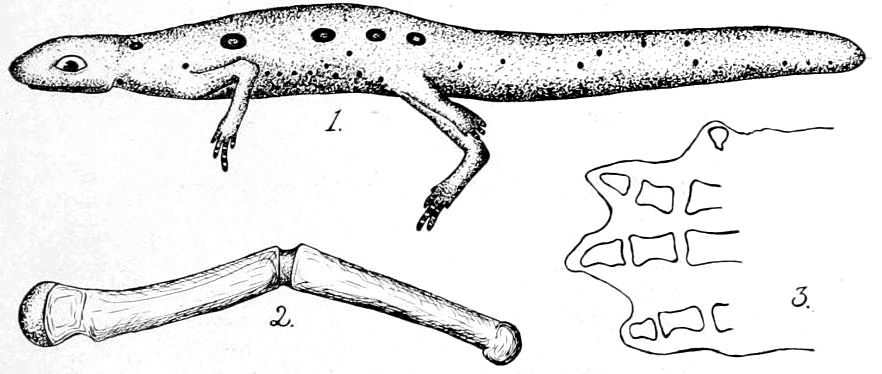
The left femur is slightly longer than the right, and is shown much enlarged at figure 2 in anterior view. Near its middle is a section of cartilege which allows of the femur being bent slightly in any direction. Tendons from the fifth foot pass to the femur at this point. Figure 3 shows a much enlarged drawing of the skeletal elements of the foot from dorsal view. The salamander was kept alive for some time but so far as was seen made no use of and exercised no control over its extra foot. I am indebted to Mr. Russi for the privilege of examining this interesting specimen which he has donated to the Salem High School Museum.
The work at the Lake Laboratory at Sandusky the past summer was very encouraging and indicates a steady growth in this branch of university work. Aside from a number of instructors and students from the Departments of Botany and Zoology and Entomology of the University, there were in attendance representatives of a number of other Ohio colleges and high schools. Courses in General Zoology, Botany, Entomology, Invertebrate Morphology, Embryology and Ornithology were given. Collecting trips to different portions of the bay, the lake shore, and the 142country adjacent to the laboratory were productive of many interesting objects for study, and reports on some of these will appear in later numbers of the Naturalist. Special excursions to Castalia, Lakeside, Kelley’s Island, Put-in-Bay and Green Island were not only enjoyable, but furnished much of profit in the way of collections. One of the most appreciated feature was a visit to the U. S. Fish Commission Hatchery at Put-in-Bay, which furnished an opportunity to watch the plankton work done on the Shear Water under the direction of Prof. H. B. Ward.
A series of Friday afternoon lectures on biological problems, with titles, “Adaptation in Animal Life,” “Aquatic Life,” “Air-breathing Animals,” “Some Phases of Evolution,” “Some Problems in Applied Zoology,” “Mimicry and Protective Resemblance in Nature,” were given by Prof. Osborn, and one on “Natural Selection,” by Prof. Landacre.
During the past summer, the plants mentioned below were measured by the writer in northern Kansas. A number of species grew far beyond the height mentioned in our manuals, although there was a very severe drought the entire summer. The height given probably approaches the maximum in but few cases and a better growing season might produce a very noticeable increase in size. The measurements are given in comparison with those of Britton and Brown’s Flora.
| Britton. | Measured. | |
|---|---|---|
| Polygonum lapathifolium L. | 3 ft. | 8 ft. |
| Polygonum camporum Meisn. | 3 | 6¼ |
| Froelichia floridiana (Nutt.) Moq. | 4 | 5 |
| Chenopodium album L. | 10 | 12½ |
| Anemone virginiana L. (Ohio) | 3 | 3½ |
| Polanisia trachysperma T. & G. | 1½ | 2¾ |
| Cassia chamaecrista L. | 2½ | 5⅔ |
| Astragalus carolinianus L. | 4 | 5½ |
| Meibomia illinoensis (Gr.) Ktz. | 4 | 7 |
| Euphorbia dentata Michx. | 1¼ | 4 |
| Euphorbia hexagona Nutt. | 1⅔ | 5 |
| Euphorbia nutans Lag. | 2 | 3¼ |
| Ceanothus ovatus Desf. | 4 | |
| Ammannia coccinea Rottb. | 1⅔ | 3 |
| Gaura parviflora Dougl. | 5 | 12 |
| Stenosiphon linifolium (Nutt.) Britt. | 5 | 8 |
| Onosmodium molle Michx. | 2 | 2½ |
| Lycopus americanus Muhl. | 2 | 5 |
| Mentha canadensis L. | 2½ | 3 |
| Mimulus ringens L. | 3 | 3½ |
| Lacinaria punctata (Hook.) Ktz. | 2½ | 3 |
| Helianthus giganteus L. (Ohio) | 12 | 13 |
| Coreopsis tripteris L. (Ohio) | 8 | 9 |
| Carduus altissimus L. | 10 | 11 |
The following list of birds I observed on Cedar Point within two miles of its extremity, from July 30th to August 20th, 1901, while a student at the O. S. U. Lake Laboratory. The list is not so complete as it might be. I found the birds I did for the most part in short daily visits of about an hour each, generally in the afternoon. One whole day I spent on the Point and two half days. With one exception, that of the American Herring Gull, I think all the species named nest in the neighborhood of Cedar Point. The list ought to be much extended by going over the part nearer the mainland. I think at least fifteen or twenty more species ought to be found there as summer residents.
I rode from Oberlin to Sandusky several times and the additional species I saw in Erie county I shall add in a list by themselves. The most noticeable of these were the Bank Swallows. They were in immense flocks along the road from Sandusky to Huron. Sometimes as many as five hundred would alight on two lengths of telephone wire.
The Long-billed Marsh Wrens were quite common all the time in the reeds to the west of the Point. They were not singing, however, after August 5th. The swamps upon the Point supplied many of the shore birds. In a flock there were generally Bartramian, Pectoral, Spotted and Semipalmated Sandpipers, Semipalmated Plover, and Killdeers. It was a common thing during the last week to hear the Coots in the marsh west of the Point. Pied-billed Grebes were also tolerably common there. The Bald Eagles were probably a pair which had a nest nearer the mainland. The American Bittern I quote on the authority of Mr. Field, of Dennison College.
I use the order of the latest A. O. U. check-list. The following abbreviations I add after each species: C.—common; Tc.—tolerably common; Fe.—few; figures indicate the exact number seen.
The Biological Club met in the Zoological lecture room on the evening of October 7th, at seven o’clock. Professor Osborn presided over the meeting.
The minutes of the June meeting were read and approved. The evening was given to reports on personal work and observations of the summer.
Professor Prosser reported that he had spent part of the summer in northern Ohio. He visited points along the Cuyahoga and Rocky rivers, and studied the outcrops of the conglomerate at Boston Ledges, Little Mountain, Thompson Ledges, Nelson Ledges and at Sharon in Pennsylvania.
Professor Kellerman collected a quantity of material in the Gauley Mountains of West Virginia, adding a number of plants to the published list of that state and securing a few that appear 146to be new to science. He also collected several hybrid oaks in Ohio, and some specimens of Cratægus, which Dr. Sargent of the Arnold Arboretum pronounces new species. A number of species have been added to the published state list of Ohio.
Professor Mills gave a report of the opening of a prehistoric mound in Ross County just outside the town of Chillicothe. A number of skeletons and some very valuable material were obtained for the collections of the Ohio Archæological and Historical Society.
Professor Schaffner spent the summer in Kansas. He talked interestingly of a visit he made to the Pottawattamie Indian Reservation, and showed a series of photographs procured during a short stay among these interesting people. Scientific investigations were made on several subjects, among which the following may be mentioned: “The Self-pruning of Trees;” “The Distribution of Cacti and Ferns in Kansas;” “The Maximum Height of Plants;” and “The Timber Conditions of Kansas.”
Professor Landacre gave observations on the cocoon-spinning and egg-laying of the common garden spider.
Mr. Morse mentioned procuring a water snake with thirty-three young. Also that the blowing viper, Heterodon platyrhinus, has some peculiar habits while in confinement. One specimen if teased would go through a series of contortions and eventually come to rest lying on its back. If all was quiet then it would soon take up its normal attitude, but if touched, or someone made a noise it was likely to turn over on its back again.
Professor Cook spoke regarding the advance of plants in rock-quarries. Monocotyls and willows are mostly brought in by water, while dicotyls are more often brought in by wind. The monocotyls are the first to appear as a usual thing. In the particular quarry in mind sycamores and willows were the only trees observed.
Mr. Bridwell spent the summer in Kansas, where most of his time was spent in collecting plants and insects. The dry weather appeared to have its effect, as collecting was not as good as it had been in former years.
Professor Osborn showed several photographs of tracks made by various animals on the sand of the lake beach at Sandusky. Also other photographs of scientific interest, among which may be mentioned the fine glacial grooves of Kelly’s Island, and the nest of a red-bird containing three young.
A proposition to hold the meetings of the club in Orton Hall for the coming year was accepted.
The November meeting is the annual meeting, at which new officers are elected, therefore a committee on nominations was appointed. Professors Schaffner, Prosser and Landacre were appointed by the chair.
Six Colleges well equipped and prepared to present the best methods in modern education. The advantages are offered to both sexes alike.
Agriculture, Agricultural Chemistry, American History and Political Science, Anatomy and Physiology, Architecture and Drawing, Astronomy, Botany, Chemistry, Civil Engineering, Clay Working and Ceramics, Domestic Science, Economics and Sociology, Education, Electrical Engineering, English Literature, European History, Geology, Germanic Languages and Literatures, Greek, Horticulture and Forestry, Industrial Arts, Latin, Law, Mathematics, Mechanical Engineering, Metallurgy and Mineralogy, Military Science, Mine Engineering, Pharmacy, Philosophy, Physical Education, Physics, Rhetoric and English Language, Romance Languages, Veterinary Medicine and Zoology and Entomology.
The large mushrooms, Puffballs and other Fungi; Abnormal growths and interesting specimens of shrubs and trees. Also herbarium specimens of Algae, Fungi, Mosses and Ferns as well as flowering plants. Address
Will exchange Hudson, Corniferous and Carboniferous fossils. Address
Birds, Insects, Reptiles, etc. We wish to make our collections representative for the fauna of the state and will greatly appreciate all contributions to that end.
Ohio State University, Lake Laboratory. Located at Sandusky on Lake Erie. Open to Investigators June 15 to September 15. Laboratory courses of six and eight weeks beginning June 30, 1902. Write for special circular.
Process and Wood Engraving, Electrotypers and Manufacturers of Stereotyping and Engraving Machinery.
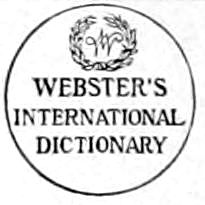

Prepared under the direct supervision of W. T. HARRIS, Ph.D., LL.D., United States Commissioner of Education, assisted by a large corps of competent specialists and editors.
☞ The International was first issued in 1890, succeeding the “Unabridged.” The New Edition of the International was issued in Oct., 1900. Get latest and best.


Also Webster’s Collegiate Dictionary with Glossary of Scottish Words and Phrases.
EVERY SCHOOL should have a collection of Natural History specimens. Why not
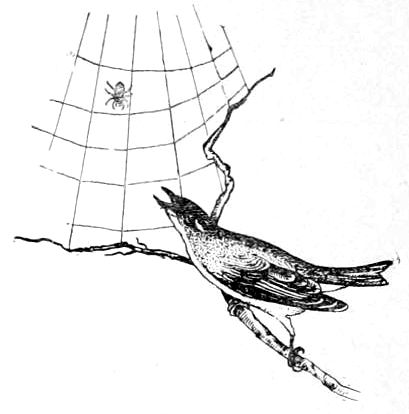
of the Birds or Mammals of your county or state, or enrich a present collection by the addition of some well mounted specimens? Costs so much? Perhaps so, but WRITE TO ME FOR PRICES and you will be surprised how little such a collection will cost after all. Think of the interest that will be awakened in your school in the
to reward you for trouble and outlay.
I mount to order
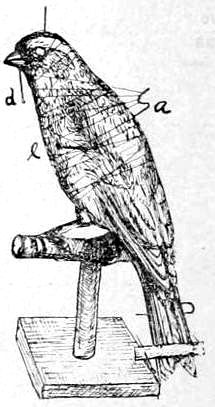
and solicit your patronage. If you are interested, you should not lose an opportunity to examine the novel collection of Ohio birds, prepared by myself, in the museum of Zoology, Ohio State University.
TAUGHT BY MAIL.—I give instructions in the Art of Taxidermy, personally, or BY MAIL. You can learn to collect and prepare your own birds, thus reducing the cost of a collection to a minimum.
For prices and circulars, address